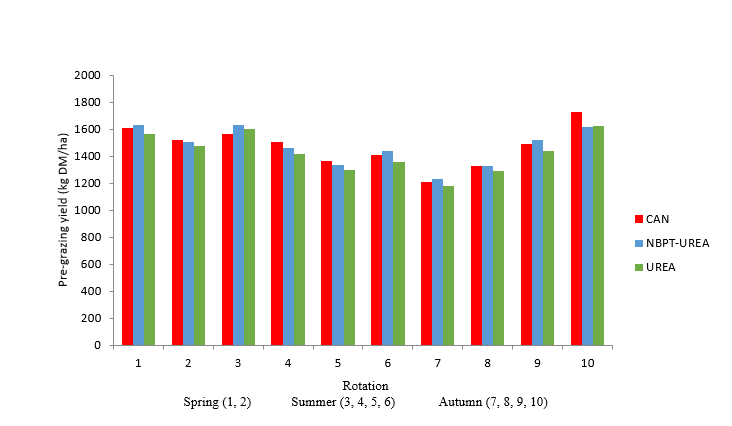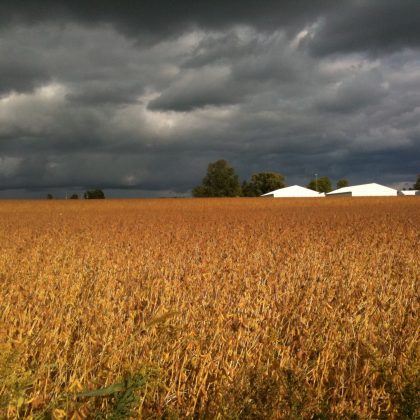Protected Urea – Protecting the Environment and Delivering for Farmers
The paper “Can a urease inhibitor improve the efficacy of nitrogen use under perennial ryegrass temperate grazing conditions? A multi-site study of N use in a temperate climate“, published in The Journal of Agricultural Science, has been chosen as the latest Editorial Highlight and is available Open Access.
This paper evaluated the effect of three nitrogen fertiliser types and two nitrogen fertiliser rates across four locations in Ireland on grass dry matter (DM) production. Although nitrogen fertilisers support high levels of grass DM production, they contribute to ammonia (from urea-based fertilisers) and greenhouse gas (GHG; from CAN-based fertilisers) emissions under Irish grazing conditions. The Irish Government has set a target to reduce total GHG emissions by 51% by 2030, and agricultural GHG emissions by 25% compared to the baseline year of 2018. The simplest and most effective way available to farmers to contribute to achieving some of these reductions is by switching their straight nitrogen fertiliser use to a protected urea form. Protected urea is standard urea that has been coated with a urease inhibitor to reduce ammonia emissions. Previous research in Ireland has shown that there was no difference in grass DM production between CAN, protected urea and urea under a cutting regime (5 to 6 cuts per year) despite finding that protected urea reduced ammonia losses compared to urea by 79% and nitrous oxide emissions by 71% compared to CAN.
Despite the clear environmental benefits of protected urea in terms of hitting Ireland’s agricultural emissions reduction targets, the uptake of protected urea usage on farms has been relatively slow.
A plot grazing study was set up to compare the grass DM production of swards fertilised with CAN, protected urea and urea under rotational grazing at a number of locations across Ireland from 2019 to 2021. Plots were grazed by dairy cows in three locations and by sheep in the fourth location. CAN, urea and protected urea (NBPT-urea was the form of protected urea used in the study) fertilisers were compared at two fertiliser rates, 150 kg N/ha and 250 kg N/ha annually. Fertiliser was applied in late January/early February each year and was then applied after each grazing. Plots were grazed in March, early April and thereafter on an approximate 21-day rotation.
The response to nitrogen fertiliser type and nitrogen fertiliser rate was similar at all four locations. There was no difference between CAN and NBPT-urea in terms of pre-grazing herbage yield (1,485 and 1,480 kg DM/ha, respectively) but pre-grazing herbage yield was slightly lower for urea (1,436 kg DM/ha; Figure 1). Across all locations and years, total grass DM production was significantly higher for CAN and NBPT-urea (13,478, 13,542 kg DM/ha) compared to urea (13,087 kg DM/ha). The 250 kg N/ha treatments had higher total grass DM production (14,448 kg DM/ha) than the 150 kg N/ha treatments (12,290 kg DM/ha). The results from this study show that farmers should have confidence in using protected urea to achieve high DM production whilst helping to reduce nitrogen losses to the environment.

The Journal of Agricultural Science Editorial Highlights are selected by the Editor-in-Chief and are available Open Access. View the recent selections here.






